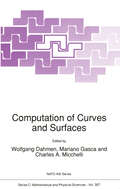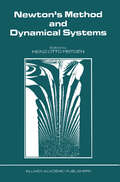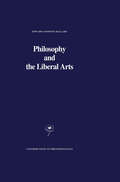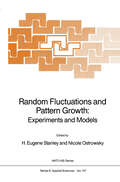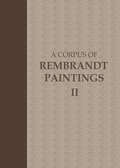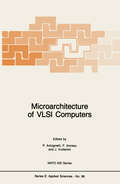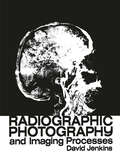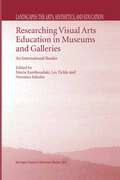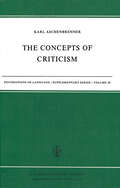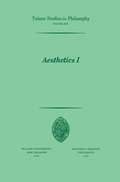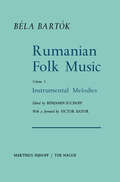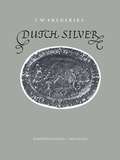- Table View
- List View
Computation of Curves and Surfaces (Nato Science Series C: #307)
by Wolfgang Dahmen Mariano Gasca Charles A. MicchelliAssembled here is a collection of articles presented at a NATO ADVANCED STU DY INSTITUTE held at Puerto de la Cruz, Tenerife, Spain during the period of July 10th to 21st, 1989. In addition to the editors of these proceedings Professor Larry L. Schumaker from Vanderbilt University, Nashville, Tennessee, served as a member of the international organizing committee. The contents of the contribu tions fall within the heading of COMPUTATION OF CURVES AND SURFACES and therefore address mathematical and computational issues pertaining to the dis play, modeling, interrogation and representation of complex geometrical objects in various scientific and technical environments. As is the intent of the NATO ASI program the meeting was two weeks in length and the body of the scientific activities was organized around prominent experts. Each of them presented lectures on his current research activity. We were fortunate to have sixteen distinguished invited speakers representing nine NATO countries: W. Bohm (Federal Republic of Germany), C. de Boor (USA), C.K. Chui (USA), W. Dahmen (Federal Republic of Germany), F. Fontanella (Italy), M. Gasca (Spain), R. Goldman (Canada), T.N.T. Goodman (UK), J.A. Gregory (UK), C. Hoffman (USA), J. Hoschek (Federal Republic of Germany), A. Le Mehaute (France), T. Lyche (Norway), C.A. Micchelli (USA), 1.1. Schumaker (USA), C. Traas (The Netherlands). The audience consisted of both young researchers as well as established scientists from twelve NATO countries and several non-NATO countries.
Philosophy and the Liberal Arts (Contributions to Phenomenology #2)
by E.G. BallardAs this collection of essays demonstrates, over a long career Edward Goodwin Ballard has written on a wide range of topics of philosophical interest. Although the present volume can be enjoy ably browsed, it is not simply a sampling of his writings. Rather, herein Professor Ballard has chosen and organized essays which pertain to the major concerns of his philosophic life. He has long held that the function of philosophy, particularly in a time such as ours, is the discernment and analysis of basic principles (archai) and their consequences. Indeed, in Philosophy at the Crossroads. he recommended focusing upon the history of philosophy understood as the movement of recognizing and interpreting the shifts in first principles as they reflect and determine human change. For Ballard, the study of the history of philosophy, like philosophy itself, is not so much a body of knowledge as an exercise (an art) whiQh moves the practitioner towards social and individual maturity. He holds, along with Plato and Husserl, that philosophy is a process of conversion to the love of wisdom as well as a grasp of the means for its attainment. Throughout his writings, Ballard has maintained that the difficulties of this journey have to do with the limitations of the pilgrim. Human being is perspectival, finite, and inevitably ignorant. Philosophic command and self -recognition reside in the just assessment of the limits of human knowledge.
Random Fluctuations and Pattern Growth: Experiments and Models (NATO Science Series E: #157)
by Harry Eugene Stanley N. OstrowskyProceedings of the NATO Advanced Study Institute, Cargèse, Corsica, France, 18-31 July, 1988
Philosophy and the Visual Arts: Seeing and Abstracting (Royal Institute of Philosophy Conferences #4)
by Andrew HarrisonThis volume consists of papers given to the Royal Institute of Philos ophy Conference on 'Philosophy and the Visual Arts: Seeing and Abstracting' given at the University of Bristol in September 1985. The contributors here come about equally from the disciplines of Philosophy and Art History and for that reason the Conference was hosted jointly by the Bristol University Departments of Philosophy and History of Art. Other conferences sponsored by the Royal Institute of Philosophy have been concerned with links between Philosophy and related disciplines, but here, with the generous support of South West Arts and with the enthusiastic co-operation of the staff of the Arnolfini Gallery in Bristol we were able to attempt even more in the way of bridge building; not only were we able to hold some of our meetings in as possible to the general the Gallery, thus making them as accessible public, but we were also privileged in having our discussions supported by two exhibitions of contemporary painting that together presented contrasting aspects of the abstracting enterprise. One, featuring works by Ian McKeever, and drawings and painting by Frank Auerbach, some of which are discussed and illustrated in the present volume, was about the painterly exploration of 'abstracting from' images in nature and in painting itself. The other, curated by Waldemar Januszczak, while showing some figurative works, was concerned with the 'pure' power of colour perceived 'abstractly, in its own right.
A Corpus of Rembrandt Paintings: Volume II: 1631–1634 (Rembrandt Research Project Foundation #2)
by J. Bruyn B. Haak S.H. Levie P.J.J. van ThielSince the second half of the last century art historians, realizing that the image of Rembrandt’s work had become blurred with time, have attempted to redefine the artist’s significance both as a source of inspiration to other artists and as a great artist in his own right. In order to carry on the work started by previous generations, a group of leading Dutch art historians from the university and museum world joined forces in the late 1960s in order to study afresh the paintings usually ascribed to the artist. The researchers came together in the Rembrandt Research Project which was established to provide the art world with a new standard reference work which would serve the community of art historians for the nearby and long future. They examined the originals of all works attributed to Rembrandt taking full advantage of today’s sophisticated techniques including radiography, neutron activation autoradiography, dendrochronology and paint sample analysis — thereby gaining valuable insight into the genesis and condition of the paintings. The result of this meticulous research is laid down chronologically in the following Volumes: A Corpus of Rembrandt Paintings, Volume I, which deals with works from Rembrandt’s early years in Leiden(1629-1631), published in 1982. THIS VOLUME: A Corpus of Rembrandt Paintings, Volume II, covering his first years in Amsterdam (1631-1634), published in 1986. A Corpus of Rembrandt Paintings, Volume III, goes into his later years of reputation (1635-1642), published in 1990. Each Volume consists of a number of Introductory Chapters as well as the full Catalogue of all paintings from the given time period attributed to Rembrandt. In this catalogue each painting is discussed and examined in a detailed way, comprising a descriptive, an interpretative and a documentary section. For the authenticity evaluation of the paintings three different categories are used to divide the works in: A. Paintings by Rembrandt, B. Paintings of which Rembrandt’s authorship cannot be positively either accepted or rejected, and C. Paintings of which Rembrandt’s authorship cannot be accepted. This volume (Volume II) contains 900 pages, starting of with five introductory chapters and discussing 101 paintings. In clear and accessible explanatory text all different paintings are discussed, larded with immaculate images of each painting. Details are shown where possible, as well as the results of modern day technical imaging.
Microarchitecture of VLSI Computers (NATO Science Series E: #96)
by P. Antognetti F. Anceau J. VuilleminProceedings of the NATO Advanced Study Institute, SOGESTA, Urbino, Italy, July 9-20, 1984
A Corpus of Rembrandt Paintings: 1625–1631 (Rembrandt Research Project Foundation #1)
by J. Bruyn B. Haak S.H. Levie P.J.J. van ThielSince the second half of the last century art historians, realizing that the image of Rembrandt’s work had become blurred with time, have attempted to redefine the artist’s significance both as a source of inspiration to other artists and as a great artist in his own right. In order to carry on the work started by previous generations, a group of leading Dutch art historians from the university and museum world joined forces in the late 1960s in order to study afresh the paintings usually ascribed to the artist. The researchers came together in the Rembrandt Research Project which was established to provide the art world with a new standard reference work which would serve the community of art historians for the nearby and long future. They examined the originals of all works attributed to Rembrandt taking full advantage of today’s sophisticated techniques including radiography, neutron activation autoradiography, dendrochronology and paint sample analysis — thereby gaining valuable insight into the genesis and condition of the paintings. The result of this meticulous research is laid down chronologically in the following Volumes: THIS VOLUME: A Corpus of Rembrandt Paintings, Volume I, which deals with works from Rembrandt’s early years in Leiden(1629-1631), published in 1982. A Corpus of Rembrandt Paintings, Volume II, covering his first years in Amsterdam (1631-1634), published in 1986. A Corpus of Rembrandt Paintings, Volume III, goes into his later years of reputation (1635-1642), published in 1990. Each Volume consists of a number of Introductory Chapters as well as the full Catalogue of all paintings from the given time period attributed to Rembrandt. In this catalogue each painting is discussed and examined in a detailed way, comprising a descriptive, an interpretative and a documentary section. For the authenticity evaluation of the paintings three different categories are used to divide the works in: A. Paintings by Rembrandt, B. Paintings of which Rembrandt’s authorship cannot be positively either accepted or rejected, and C. Paintings of which Rembrandt’s authorship cannot be accepted. This volume (Volume I) contains 730 pages, starting of with four introductory chapters and discussing 93 paintings. In clear and accessible explanatory text all different paintings are discussed, larded with immaculate images of each painting. Details are shown where possible, as well as the results of modern day technical imaging. In this volume the first ever works by Rembrandt are discussed, also using his etchings as comparison.
Radiographic Photography and Imaging Processes
by D.J. JenkinsThe imaging aspects of radiography have undergone con many sources and was in general freely given when requested siderable change in the last few years and as a teacher of and this is gratefully acknowledged. In particular I would radiography for many years I have often noticed the lack of a like to express my sincere thanks for help and information to comprehensive reference book for students. This book is an Mr J. Day of DuPont (UK) Ltd. particularly for the infor attempt to correct that situation and I hope this text will be mation and illustrations in the chapter on automated film of value not only to student radiographers but also prac handling; Mr D. Harper and Mr R. Black of Kodak Ltd. ; tising radiographers as well. Fujimex Ltd. ; CEA of Sweden; 3M (UK) Ltd. ; Wardray Much of the information is based on personal experiment Products Ltd. ; D. A. Pitman Ltd. ; Agfa-Gevaert; PSR Ltd. and the knowledge gained of students' difficulties in studying for their help with information on silver recovery, and this subject. I have attempted to gather together in one book Radiatron Ltd. for their help with safelighting. All were most all the information required to understand the fundamentals helpful in my many requests for information. of the subject both for examination and for practice. Some To Mrs A. Dalton and Mrs P.
Researching Visual Arts Education in Museums and Galleries: An International Reader (Landscapes: the Arts, Aesthetics, and Education #2)
by Maria Xanthoudaki Les Tickle Veronica SekulesResearching Visual Arts Education in Museums and Galleries brings together case studies from Europe, Asia and North America, in a way that will lay a foundation for international co-operation in the future development and communication of practice-based research. The research in each of the cases directly stems from educational practice in very particular contexts, indicating at once the variety and detail of practitioners' concerns and their common interests.
The Power of Planning: Spaces of Control and Transformation (GeoJournal Library #67)
by IanAlexander DavidHedgcock JoLittle OrenYiftachelThe book addresses critically the question: "What is the societal impact of urban and regional planning?". It begins with a theoretical discussion and then analyses, through a series of case studies, the intentions, contents, struggles and consequences of urban and regional planning. It shows that plans and policies often defy the commonly perceived role of advancing equality, justice, development and amenity, by causing social problems, marginalisation and inequalities. The book looks at planning from a critical distance, without a priori belief in its necessity or usefulness. The 12 chapters, written by renowned international scholars, demonstrate the multiplicity of social and political struggles over the contested terrain of spatial policies. The book focuses on four key areas where the impact of planning is explored: the community power, gender relations, ethnic tensions, and social polarisation, while comparing three societies: Australia, Israel and England. Audience: This volume is mainly intended for faculty and students of academia, but also for urban professionals and policy-makers. The book is relevant to fields such as urban and regional planning, geography, political science, urban studies, urban sociology, urban anthropology, ethnic and gender relations.
Computer-Aided Design of User Interfaces III: Proceedings of the Fourth International Conference on Computer-Aided Design of User Interfaces 15–17 May 2002, Valenciennes, France
by Christophe Kolski Jean VanderdoncktAdvances in electronics, communications, and the fast growth of the Internet have made the use of a wide variety of computing devices an every day occurrence. These computing devices have different interaction styles, input/output techniques, modalities, characteristics, and contexts of use. Furthermore, users expect to access their data and run the same application from any of these devices. Two of the problems we encountered in our own work [2] in building VIs for different platforms were the different layout features and screen sizes associated with each platform and device. Dan Ol sen [13], Peter Johnson [9], and Stephen Brewster, et al. [4] all talk about problems in interaction due to the diversity of interactive platforms, devices, network services and applications. They also talk about the problems associ ated with the small screen size of hand-held devices. In comparison to desk top computers, hand-held devices will always suffer from a lack of screen real estate, so new metaphors of interaction have to be devised for such de vices. It is difficult to develop a multi-platform user interface (VI) without duplicating development effort. Developers now face the daunting task to build UIs that must work across multiple devices. There have been some ap proaches towards solving this problem of multi-platform VI development in cluding XWeb [14]. Building "plastic interfaces" [5,20] is one such method in which the VIs are designed to "withstand variations of context of use while preserving usability".
Computer Aided Architectural Design Futures 2001: Proceedings of the Ninth International Conference held at the Eindhoven University of Technology, Eindhoven, The Netherlands, on July 8–11, 2011
by Bauke De Vries Jos P. Van Leeuwen Henri AchtenCAAd Futures is a Bi-annual Conference that aims at promoting the advancement of computer aided architectural design in the service of those concerned with the quality of the built environment. The conferences are organised under the auspices of the CAAD Futures Foundation which has its secretariat at the Eindhoven University of Technology. The Series of conferences started in 1985 in Delft, and has since travelled through Eindhoven, Boston, Zurich, Pittsburgh, Singapore, Munich, and Atlanta. The book contains the proceedings of the 9th CAAD Futures conference which took place at Eindhoven University of Technology, 8-11 of July, 2001. The Articles in this book cover a wide range of subjects and provide an excellent overview of the state-of-the-art in research on computer aided architectural design. The following categories of articles are included: Capturing design; Information modelling; CBR techniques; Virtual reality; CAAD education; (Hyper) Media; Design evaluation; Design systems development; Collaboration; Generation; Design representation; Knowledge management; Form programming; Simulation; Architectural analysis; Urban design. Information on the CAAD Futures Foundation and its conferences can be found at: www.caadfutures.arch.tue.nl. Information about the 2001 Conference and this book is available from: www.caadfutures.arch.tue.nl/2001.
The Concepts of Criticism (Foundations of Language Supplementary Series #20)
by L. AschenbrennerTbis inquiry may be thought of as a sequel to The Concepts of Value and as an extension of the brief core-vocabulary of aesthetic concepts found in one of the appendices to it. In terms of sheer numbers, most of the value concepts of our language are to be found in the area of human relations and of the aesthetic. There are also other value vocabularies, shorter but equally important, for example, the cognitive and logical. These and other objects of pbilosopbical study (for example, the question of "other minds") deserve the kind of empirical survey that has been made of moral and aesthetic notions, if only to test a priori approaches to them. In the present studyan even more determined empirical approach than that adopted for the first has been found necessary. Once the moral or human value vocabulary has been identified, sentential contexts for the use of the terms readily come to mind. In a study of the language of criticism, however, the vocabulary has first to be sought in the utterances of critics themselves and quoted in sufficient context to make their critical intentions clear. The outcome is that the present study is of great length, about half of it being quotations from critics. The rule adopted for arriving at tbis length go on collecting quotations as long as new types of appraisal came was to to light.
Maritain’s Ontology of the Work of Art
by J.W. HankeI. Since the appearance in 1902 of Benedetto Croce's L'estetica come scienza dell' espressione e linguistica generale, the problem of the ontology of the work of art or aesthetic object - what kind of thing it is and what its mode of being is - has come to occupy a central place in the philosophy of art. Moreover, a particular conception of the identity of art objects is at present a driving force in some quarters of the art world itself. As Harold Rosenberg so well points out, Minimalist or Reductive Art has attempted, sometimes quite self-consciously, to establish the autonomous physical reality of the work of art by empty ing it of all expressive and representational content. ! What is the ontological problem? One rather crude way of stating it is to ask where the work of art or object of aesthetic contemplation 2 exists. Is it, to pick some examples, to be identified with the material product of the artist's labors which exists spatially "outside of" and independently of artist and beholder? Or does it exist only "in the mind" of the beholder or the artist? Is it either one perception of a beholder or a series of his perceptions? Or is it the class of all percep tions of either all spectators or all "qualified" spectators? Put another way, it would be a question of whether and to what such purported names as 'Beethoven's Fifth Symphony' refer.
Guevara, a Forgotten Renaissance Author (Archives Internationales D'Histoire Des Idées Minor #4)
by A.S. GreyAesthetics I (Tulane Studies in Philosophy #19)
by Ramona Cormier Shannon Dubose James K. Feibleman John D. Glenn Harold N. Lee Marian L. Pauson Louise N. Roberts John SallisRumanian Folk Music: Instrumental Melodies (Bartok Archives Studies in Musicology #1)
by Bela Bartokn several of his writings on folk music Bela Bart6k recalls an incident I that happened to him in 1904 during a visit to a small village in Tran 1 syl vania. Quite by chance he heard there an eighteen-year-old Hun garian peasant girl singing Hungarian folk songs whose construction was 2 significantly different from the songs he had known until then. This experience appealed to his imagination far deeper than chance oc currences usually do. It sparked in him a creative fire that was there after to impart to his music certain characteristics that are recognizable today as indigenous to the Bart6kian style of composition. The inspirational value of the incident was rekindled by return trips to Transylvania. During these trips he was not merely listening. He began notating, melodies, building them into a coordinated collection. Soon Bart6k's itinerary took him into villages populated in checkered proximity by both Hungarians and Rumanians, thence into little communities where the population was exclusively Rumanian. There he discovered that their songs were much less, if at all, influenced by the urban civilization of Western Europe than those he had collected in Hungarian villages. In an interview he gave to a Transylvanian newspaper in 1922, Bart6k described the difference between the available Hungarian and Rumanian songs.
Dutch Silver: Embossed Ecclesiastical and Secular Plate from the Renaissance until the End of the Eighteenth Century
by J.W. FrederiksThe fourth volume on Dutch silver deals with those embossed ecclesiastical and secular objects which are not described in Volume I. Since that volume is confined to plaquettes, tazze and dishes, together with the complete oeuvre of the three most famous artists Adam and Paul van Vianen, and Lutma, a large variety of objects remains to be dealt with. Amongst these are many very important and beautiful vessels. The principal pieces described in this volume are of ecclesiastical origin such as monstrances, ciboriums, chalices, pyxes, chrismatories, mass-cruets, incense-boats and burners, altar-thrones, lecterns, missal covers, canon-board frames, altar -bells, altar-vases, altar -candlesticks, sanctuary lamps and sconces. Further, secular silver such as plaquettes, tazze and dishes, that have come to our knowledge since the publication of the first volume, and also plaquette medals, boxes, book-covers, beakers, tankards, cups, bowls, basins, bottles, plate used for the toilet, for the table, candlesticks and plate used for the service of tea, coffee and chocolate. A general survey of a number of objects is given in the Introductions to the first and second volumes (Volume I, p. VI; Volume II, p. VI~XIV). Certain additional observations concerning the nature, technique of manufacture and decoration of the particular types of article illustrated in this volume are, however, necessary.
Dutch Silver: Wrought Plate of the Central, Northern and Southern Provinces from the Renaissance until the End of the Eighteenth Century
by J.W. FrederiksThis third volume on Dutch Silver does not need a lengthy introduction, since it is a continuation of the second volume, describing and reproducing the wrought plate of the other provinces of the Netherlands, i. e. Zeeland, Utrecht, North-Brabant, Limburg, Gelderland, Overijsel, Friesland and Groningen. The province of Drenthe, until recent years a district with a poor population, has never produced important pieces of silver, but only rather insig nificant "folk art" which need not be included in this book. The general observations contained in the introduction to Volume II apply also to this volume. Here we shall add only certain particular observations regarding the most important and characteristic productions of the various provincial masters. Many of their works are well above the standard normally reached by local celebrities, and some mention of their particular skills and versatility is, therefore, called for. The silver of ZEELAND is, in general, of fine quality and neatly executed. Though this island province, lying between Holland and Belgium, had much easier communications with the Southern Netherlands than with Holland, it is evident that the influence of the latter on the Zeeland silversmiths was predominant. One of the most outstanding pieces of Dutch silver, the eight-pointed dish of 1631 made by the Middelburg silversmith and engraver Johannes Looff (no.
Dutch Silver: Wrougt Plate of North and South-Holland from the Renaissance Until the End of the Eighteenth Century
by J.W. FrederiksDutch Silver: Embossed Plaquettes Tazze and Dishes from the Renaissance Until the End of the Eighteenth Century
by J.W. FrederiksProsperity generally brings with it a desire for luxury, which finds its expression in man's endeavour to surround himself with objects of beauty. Artists of all kinds are always being attracted to the centres of wealth, which thus develop into centres of art. We observe this through the whole of history; in antiquity, in the Middle Ages and, above all, during the Renaissance in Italy, where the many States and cities vied with each other in fostering cultural life, where palaces, castles and churches were built and decorated by the greatest artists as a result of the liberality of the art-loving princes, whose example was followed by the nobility and the rich merchants. North of the Alps, it was mainly France that came into the foreground in this field. The Duc de Berry was one of the greatest patrons of art of all times. His brother Philip, Duke of Burgundy, and his successors made of their court, which frequently resided in the Southern Netherlands, a centre of culture. Under the Hapsburgs the tradition was con tinued. The Northern Netherlands, which also gradually came to be part of the Burgundian realm (Holland since 1433), at first lagged behind as far as cultural life was concerned, but little by little they caught up with their southern contemporaries. An important factor in the development of the Netherlands was their geographical po sition, which predestined them to become a great commercial centre.
